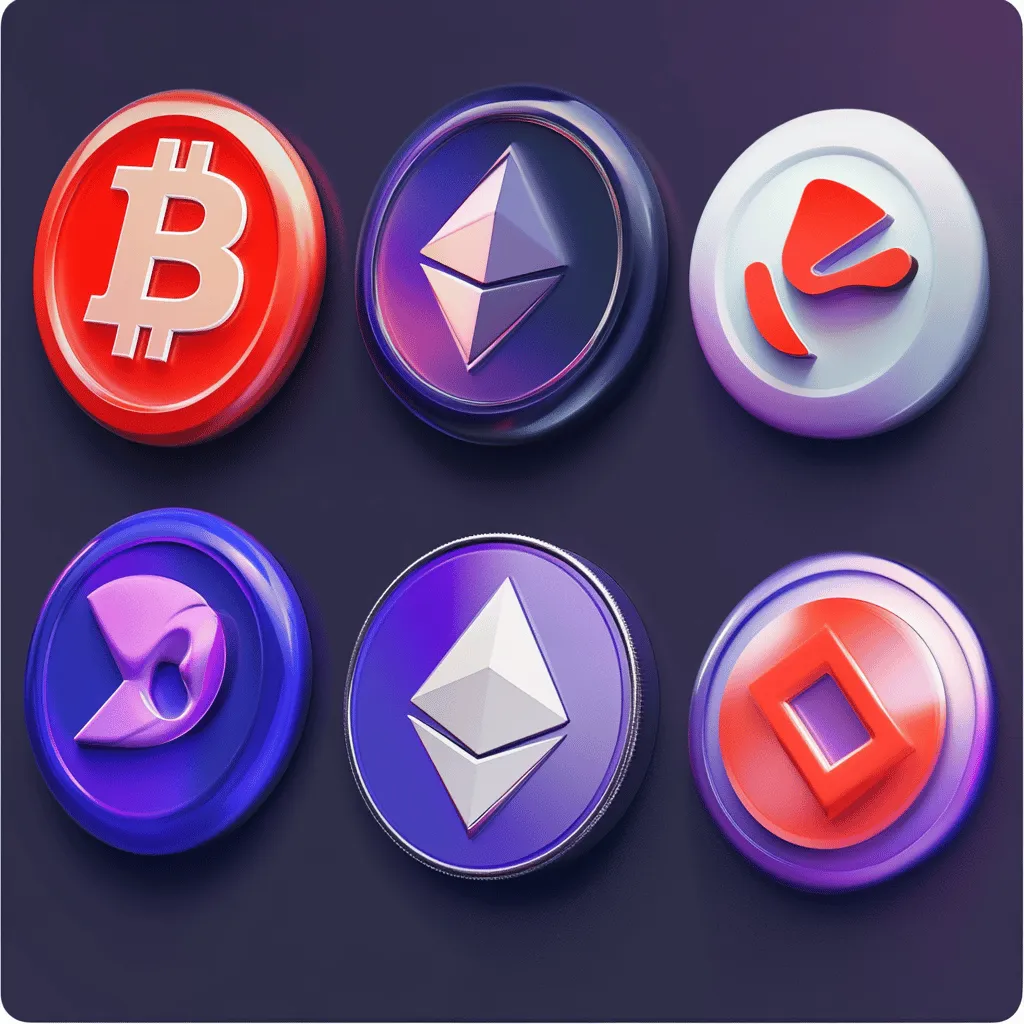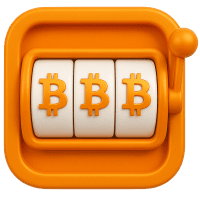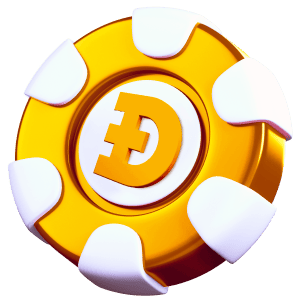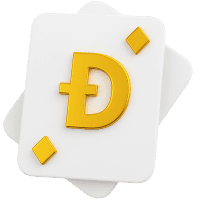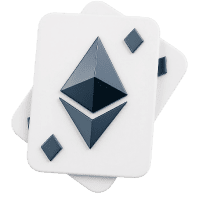Orbiter Finance Review: Enhancing Ethereum with Cutting-Edge ZK-tech Solutions
Orbiter Finance (OBT) is a decentralized cross-rollup solution that enables fast and cost-effective asset transfer between various second-tier networks. It helps improve interoperability between different rollups, both Ethereum-based and with other blockchain ecosystems, reducing liquidity fragmentation and creating a comprehensive set of interconnected networks.
Starting out as a cross-rollup, Orbiter Finance eventually evolved into a zero-knowledge (ZK) based rollup that supports cross-rollups combined with the security and efficiency of ZK technology. In this article, let’s take a look at what Orbiter Finance is, how the protocol works, the token’s features, and the impact on Web3.
What is Orbiter Finance
Orbiter Finance is an interconnect protocol based on zero-disclosure proof-of-stake (XK-Proof) technology, whose developers aim to revolutionise the Ethereum ecosystem. The protocol optimises all transactions at layer 2 and reduces gas consumption in a way that is both cost-effective and as fast as possible.
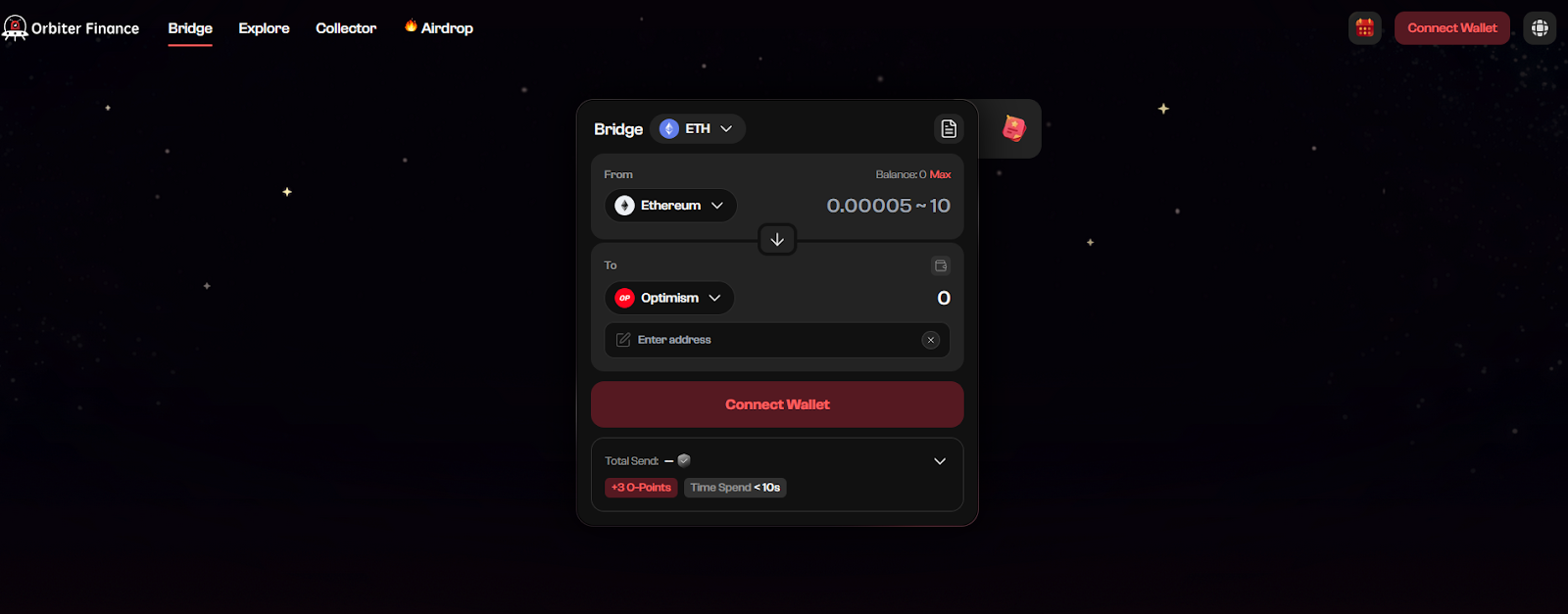
Let’s list the key features of the Orbiter Finance protocol:
- Security. Orbiter Finance uses the security of Rollups, which minimises the risks associated with synchronising data between connected blockchain networks. This is made possible by synchronising data with the Ethereum core network. This is how the developers achieved a secure process of asset and data transfer.
- Compatibility. The protocol supports L2 and L3 levels, both EVM and non-EVM, validiums, as well as special application accumulation packages. This versatility has resulted in a wide range of use cases, making the platform attractive to users who value transaction flexibility.
- Transaction speed. The protocol provides exceptional information transfer speeds among all existing portals. Transactions between two EOA addresses can be completed within 10-20 sec.
- Cost-effectiveness. Orbiter Finance offers customers low fees, which are the sum of the gas costs for transactions between two participants, both in the source and target network.
These features set Orbiter Finance apart from other competitors, as users get a feature-rich protocol, with high levels of security and transaction speeds.
How Orbiter Finance works
The Orbiter Finance network is a ZK rollup that is compatible with the Ethereum Virtual Machine (EVM) and supports smart contracts. It uses a network of maker nodes for cross-rollup transfers. Makers set up addresses on participating networks and provide liquidity so that senders – users performing cross-rollups – can send assets efficiently and at low cost. By acting as liquidity providers on the destination and origin networks, makers support efficient transfer activities through the Orbiter financial platform.
Initially, the platform’s architecture envisaged that makers would use wallets with an external account. But the platform later changed the concept and announced plans to implement the Omni/Orbiter Account Abstraction (OAA) protocol to improve cross-chain interoperability and reduce the cost of rollup-to-rollup transfers. Once the protocol is fully implemented, makers will switch to using OAA addresses.
The protocol developers used zero-knowledge proof-of-concept (ZKR) technology and hardware accelerators to ensure secure and fast asset transfers. Note that the use of ZK-based SPV technology allows the network to quickly and securely validate valid transactions, minimising the incidence of failed transfers and validator issues in these transactions.
The project team continues to improve the protocol. Orbiter Finance is developing a proof aggregation layer that will process and standardise different ZKRs to create a single system for fast proof processing, thereby reducing transaction bottlenecks, increasing the efficiency of the platform. Note that ZKR aggregation will also benefit users for the reason that it leads to lower gas costs. And this increases the overall efficiency of Orbiter Finance.
How Orbiter Finance processes transactions
Orbiter Finance uses advanced zero-disclosure proof-of-concept, a sophisticated coptographic method that allows assets to be transferred between different networks quickly and efficiently, without revealing basic information about the asset owners.
Let us detail the principles on which this transaction processing method is based:
- Transfer initiation. In Orbiter Bridge or through another protocol tool, the user initiates the entry of their assets into a smart contract destined for Orbiter Finance located in the originating chain.
- Asset Lock-in. Once a transfer is initiated, an allocated amount is locked in the smart contract, ensuring they are safely stored throughout the process.
- Transfer Verification. Using ZK proofs, Orbiter Finance verifies the details of the transfer without revealing any sensitive information. This method confirms that the transaction is legitimate and that the sender is authorised to make the transfer.
- Value Transfer. Once the transaction is verified, the equivalent value of the assets is transferred to the target chain. This step provides assurance that the resources are ready for use on the other side.
- Asset claim. Once the equivalent amount has been transferred to the underlying blockchain, users can claim their assets by interacting with the corresponding Orbiter Finance contract on the new chain. They must prove their ownership, typically by confirming their identity or fulfilling certain cryptographic conditions.
Orbiter Finance stands out from its competitors by implementing ZK proof-of-stake. This increases the overall security of asset transfers, but also guarantees transaction confidentiality and resistance to various types of fraud. This system positions Orbiter Finance as an indispensable tool for users who need to interact quickly and securely in the growing Ethereum accumulation packet ecosystem.
What is the Orbiter Rollup
At the heart of the Orbiter Finance ecosystem is the Ethereum-linked Level 2 Rollup. We’ve already noted that Orbiter Finance was originally a bridging protocol that connected various rollup networks to efficiently transfer assets. The workings of the protocol changed in early 2024 when Orbiter Rollup was announced. This was to create a more cost-effective and scalable environment for cross-rollup transactions. Orbiter has its own rollup platform that offers additional features secured by technologies such as ZKP, SPV, OAA and intent-based transactions.
Orbiter’s rollup works as a zkEVM platform and completes all transactions by writing them to Ethereum Level 1. This provides users with a highly secure transaction environment supported by the underlying Ethereum blockchain.
Intent-based functions are implemented in the rollup. When viewed from the perspective of blockchain technology, intentions are user-defined messages that outline desired transactions with certain conditions. For example: ‘In Orbiter Finance Swap from Ether to Bitcoin subject to a certain minimum acceptable swap rate’. This customer intention is converted into an executable transaction recorded in the blockchain registry only if an option is found that meets these conditions. Rollup Orbiter acts as an aggregation layer for cross-rollup messages of user intent.
Cross-rollup protocol with inscripts
The Orbiter Finance product line also includes an inscript-centric cross-rollup protocol. With the launch of the bitcoin-based Ordinals protocol, blockchain strategies are small pieces of data that can be attached to cryptotokens to create unique digital artefacts. In various forms, inscription technology is used in other blockchain ecosystems besides bitcoin, including Ethereum.
Orbiter’s inscription protocol allows developers to create inscription tokens for as little as 0.00023 ETH (about 65 cents as of February 16, 2025) on supported blockchains such as Arbitrum One, Optimism, Base, Linea and Scroll, and allows for flexible and efficient transfer of these tokens between rollups.
How secure is Orbiter Finance
Orbiter Finance is a decentralised crypto-bridge that benefits from rollup security and is secured by a series of smart contracts. The security of Orbiter Finance from ZK swaps minimises the risk associated with synchronising data between networks and prevents attackers from accessing data at every stage of transaction processing.
The protocol’s operation is enabled by a series of smart contacts that include two polys: the sender and the creator. The Creator provides liquidity for cross transfers initiated by the Sender. When either the Sender or the Creator initiates a transaction that contradicts protocol rules and engages in malicious behaviour, the person triggering the behaviour is marked as Challenger, while the other party is referred to as the Challenger. If this scenario occurs, both parties have the right to prove the validity of the transaction. If the transfer fails, the sender can initiate an arbitration request for a smart contract at the Creator’s margin and then receive excess compensation.
The Bridge prevents this malicious behaviour by using an arbitration mechanism that allows senders to track and troubleshoot their transactions if assets do not arrive in their wallet in a timely manner. When senders initiate an arbitration request, they must provide proof of transaction to prove that the transaction is valid. On the other hand, will have to provide evidence to prove that the transfer has taken place or is in the process of being confirmed.
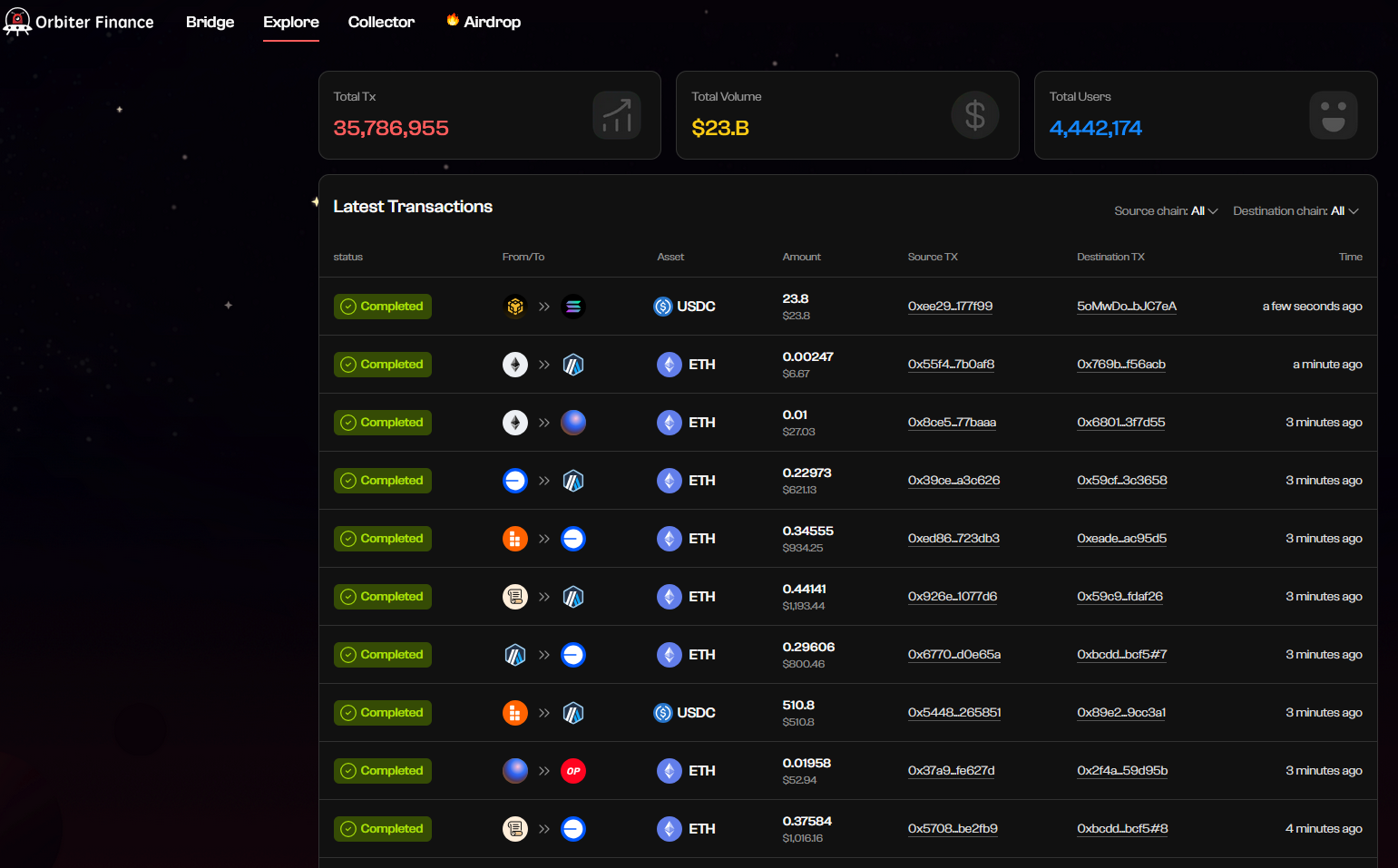
If the Maker provides all the necessary proof, they will not suffer any loss, but if they do not, the submitter will receive a full refund along with the Maker’s share of the excess margin associated with the designated transaction.
Proof of transaction validity is not the only security tool provided in Orbiter Finance. The protocol deploys 3 contracts on the network to verify the transaction in arbitrage. These are the MDC contract, the EBC contract and the ZK-SPV contract. The MDC contract (Maker deposit contract) has a maker margin and will take care of compensation for senders. EBC is an event binding agreement. This verifies the match between the source and the target transaction. ZK-SPV (Pro-Knowledge Simple Payment Verification) demonstrates the existence and validity of cross-roll transactions using zero-knowledge verification technology.
Orbiter Tokenomics (OBT) overview, chart and price of OBT
OBT is the service and management token of Orbiter Finance, an infrastructure interconnection protocol that enables interoperability and reduces liquidity fragmentation between different blockchains. Key coin details:
- Token: OBT (Orbiter).
- Social Media: Twitter, Discord, Medium, Youtube, Github
- Network: Ethereum, Arbitrum, Base
- Contract: TBA
- Total bid: 10,000,000,000,000 OBT.
- Initial Offer: 2,800,000,000,000.Fully diluted market capitalisation: $96.62 million.
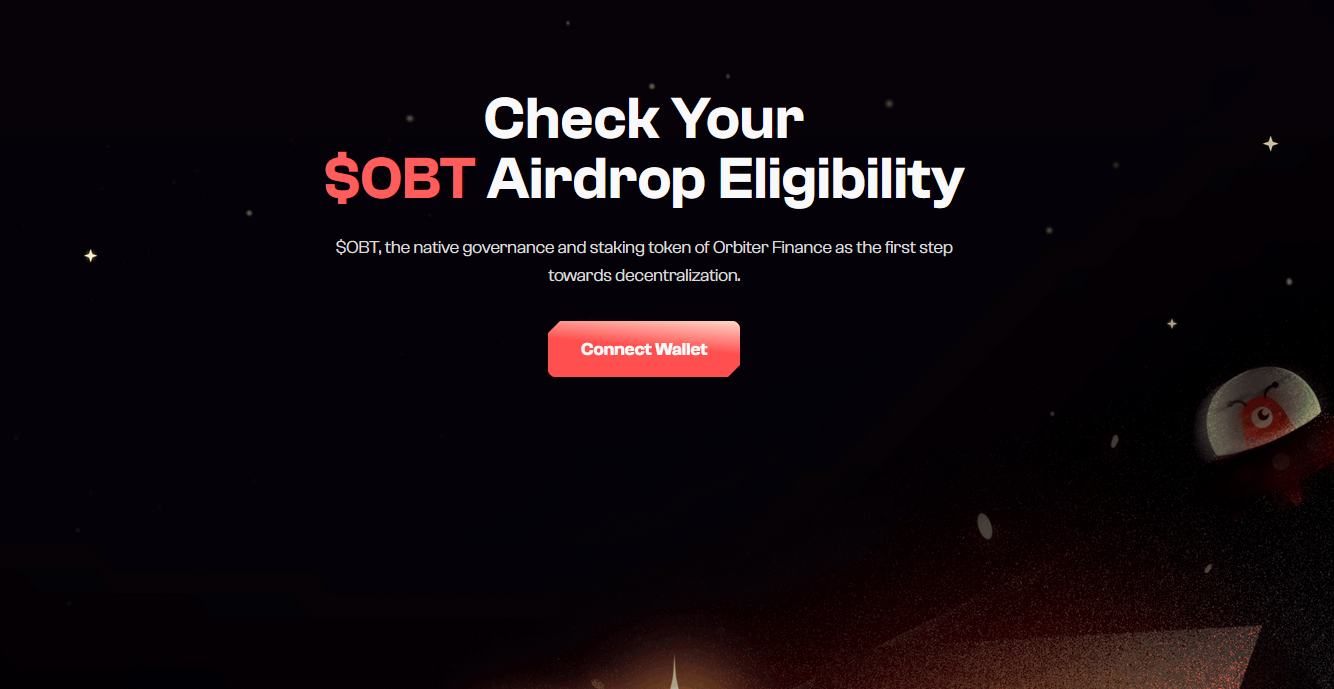
This is an ERC-20 standard token in Ethereum, Arbitrum and Base networks. It is used for inter-network communication as well as protocol management. Holders of the coin have the right to vote on decisions related to the management of the platform and can directly participate in the future of the platform. Onchain governance is scheduled to be launched in February 2025.
The token allocation scheme is shown in the table below.
| Share | Category | Quantity | Description |
| 40% | Community | 4 000 000 000 | Distribution to users through rewards and free giveaways to stimulate user growth, promote projects, and increase ecosystem activity. |
| 22% | Orbiter Finance Airdrop | 2 200 000 000 | Initial community giveaway |
| 20% | Ecosystem | 2 000 000 000 | To build the ecosystem and expand the market, strengthen partnerships and incentivise sustainable business development |
| 15% | Team and developers | 1 500 000 000 | Distributed to the team and key contributors to incentivise long-term commitment to project development, guaranteeing technological innovation and progress |
| 15% | Orbiter Finance Fund | 1 500 000 000 | Tokens are allocated to the Orbiter Foundation to realise the vision of ‘All chains one hub’. |
| 10% | Investors | 1 000 000 000 | Investors of Seed and Series A funding rounds. |
Pros and cons of Orbiter Finance
The protocol is not perfect, just like any other product. Let’s tell you about the main pros and cons that Orbiter Finance has.
Pros
Innovative project concept. Orbiter Finance offers a reliable way to ensure blockchain interoperability thanks to its efficient and cost-effective asset transfer system.
High performance. The protocol boasts high performance that enables data transfer several times faster and more cost-effective than traditional interconnect bridges. This enhances convenience and benefits for users.
Active community engagement. Orbiter Finance’s active participation in social platforms such as Twitter and Discord has enabled the formation of a dynamic community that plays a key role in receiving feedback and further development of the project.
Popularity among users. According to PKX, the protocol has attracted around 700,000 active users to its platform. This demonstrates widespread acceptance and trust from participants in the crypto community.
Cons
Non-transparent tokenomics. There is a noticeable lack of information about the token on the protocol’s website, official documents and public announcements. This can cause distrust on the part of investors.
Limited high-level investment. The project has attracted the attention of some investors, but the participation of large funds and the amount of funds raised is still low, which may affect the perception of its reliability and scaling potential.
Security concerns. The lack of post-creation security verification raises concerns about the reliability and security of the bridge, which are critical aspects in the blockchain space.
Marketing challenges. Orbiter Finance is experiencing problems with influencer engagement and search engine optimisation marketing, which are necessary to raise awareness and attract new customers.
Lack of a transparent team. There is scant information publicly available about the team behind the design and creation of the Orbiter Finance protocol. For many large investors – this could be a red flag and they will choose another project to invest in.
To address these issues and strengthen its position in the market, Orbiter Finance could benefit from more transparent communication, participation in due diligence security checks and intensifying its marketing efforts to better reach potential users and investors.
Conclusion
Orbiter Finance is a fast and inexpensive bridging protocol for cross-transferring Ethereum proprietary assets. The development team has a lot to work on, as there are challenges with the security and openness of the project.
Orbiter Finance demonstrates significant potential for cross-network interoperability and efficient movement of assets between different blockchains. Its innovative approach to solving cross-chain interoperability challenges makes this project attractive not only to developers, but also to users seeking more flexible and secure financial transactions.
In an increasingly competitive cross-chain environment, Orbiter Finance carves out a niche for itself with its unique combination of technological efficiency and affordability. Further development of the protocol will depend on the team’s ability to attract new partners, improve user experience and build trust from institutional market players.
Answers to common questions
What is Orbiter Finance?
Orbiter Finance is a cross-chain protocol that allows users to move assets between different blockchains securely and efficiently. The protocol aims to solve the problem of interoperability between different networks by providing high transaction speeds at minimal cost.
Is Orbiter Finance a legitimate medium?
Yes. Orbiter Finance is a legitimate bridging solution, but there have been security issues in the project’s history.
Is Orbiter Finance safe?
The project team is committed to fixing the security issues that have been present in the past. The platform is more secure now, but it is important to exercise caution with large payments.
Which cryptocurrencies are supported by Orbiter Finance?
Currently, Orbiter Finance supports popular cryptocurrencies such as Bitcoin (BTC), Ethereum (ETH), Binance Smart Chain (BSC) and Polkadot (DOT). However, the list of supported cryptocurrencies is constantly expanding and the team is actively working on integrating new blockchains.
What is the fee for using Orbiter Finance?
The fees for using Orbiter Finance depend on several factors, including the network chosen, the type of asset being transferred, and the current level of network congestion. The team strives to keep fees as low as possible, ensuring a competitive experience for its users.


